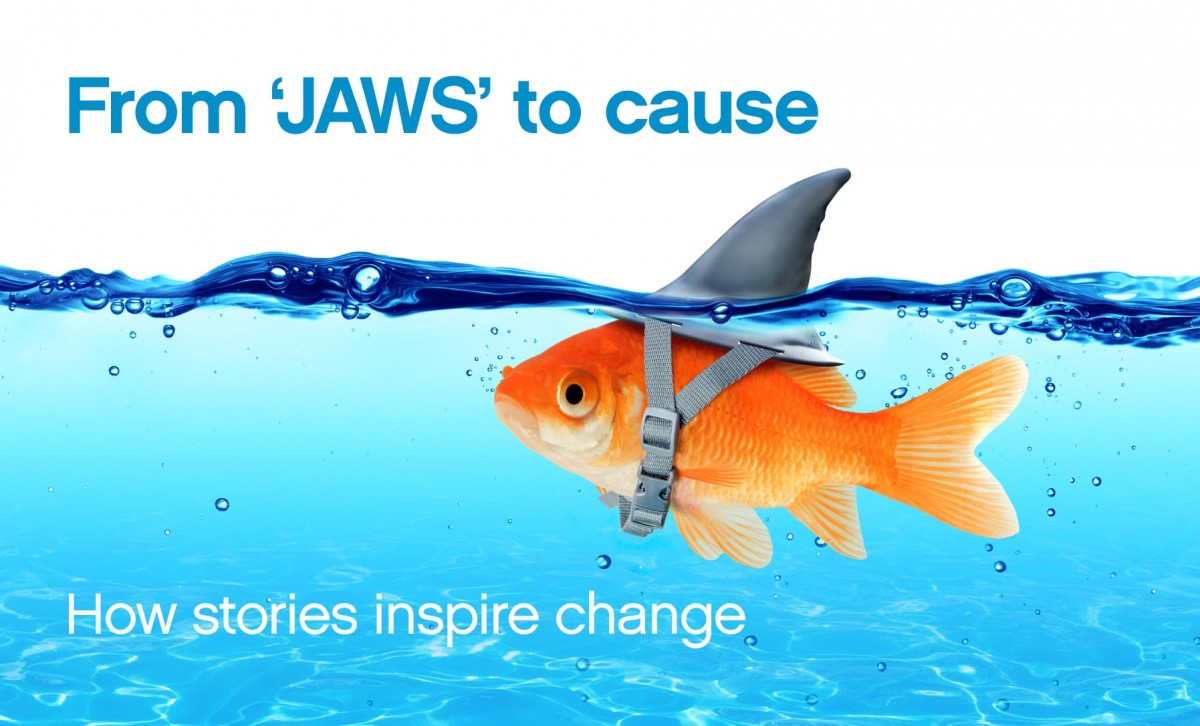
From ‘JAWS’ to cause
How stories inspire change
Human beings have been telling stories for as long as there’s been a language to tell them in. We think in stories, remember in stories, learn in stories and turn just about everything we experience into a story. Dramatic story structure is based on a character’s emotional journey and change, and this mirrors the journey that businesses embark upon when they set out to transform or enhance their safety culture.
David Mansell joined Tribe last year as a Lead Creative Consultant. His background is in television scriptwriting and production, including Casualty, EastEnders and Coronation Street, so he knows first hand the power of a good story.
Following our recent Virtual Forum on the topic, I asked David to explain what it takes to make a story memorable and inspiring, and what that has got to do with culture change.
David Mansell
Have you watched the movie JAWS?
A story begins in the ‘ordinary world’ – this is where we discover the problems of the world we are visiting. In the film ‘Jaws’, Chief Brody is a police chief who commands little respect, isn’t trusted and is seen as an outsider. In culture change, this ‘ordinary world’ could be how we find Organization X – where, for instance, there’s a lack of trust in the leaders, a perceived blame culture, and safety has become a tick box exercise.
INCITING INCIDENT: Chief Brody’s ‘ordinary world’ is then upset by (what we call in film and TV) an inciting incident – it’s a dramatic event that turns his world upside down. In essence, it kick-starts the story. In ‘Jaws’ it’s when he witnesses the death of a young boy on the inflatable at the beach. So, back to Organization X – and, the inciting incident could be an accident, or the lead up to one.
MISSION: For Chief Brody and Organization X, the inciting incident prompts a new desire – it creates a mission. For Brody that new desire is very simply ‘to kill the shark’. In Organization X, it could be ‘to get everyone home safe every day’.
OBSTACLES: So, we now know what the journey is going to be for both Brody and Organization X – but, both of them will face obstacles on that journey that they will need to overcome. A culture assessment will clearly show the types of obstacles that get in the way of people choosing safety. By recognizing these obstacles, Organisation X can clearly paint a picture of what the characters need to do to overcome them. These are the behaviours that will transform safety culture.
DILEMMA: In all stories, there comes a crisis point just before the end, where our hero faces a choice… to go back to the ordinary world and give up on their mission, or forge ahead and overcome the biggest hurdles of all. In ‘Jaws’, Brody forges on when all seems lost, and he defeats the shark… In Organisation X, our hero faces a choice, maybe it’s to keep their head down and get the job done, or speak up, share their concern, stop the job… and avoid the accident.
MORAL OF THE STORY: Either way, at the end of the story, your characters must be able to do something that they couldn’t do at the beginning. They will have learned and grown. They will have changed and moved on from the ‘ordinary world’ we first met them in… and settled into a world that is better, safer and healthier for everyone.
Businesses use brand stories all the time to help them sell their products.
At Tribe we use stories to do the same, but to support clients on their culture change journey and to drive the momentum to sustain it for long term.




